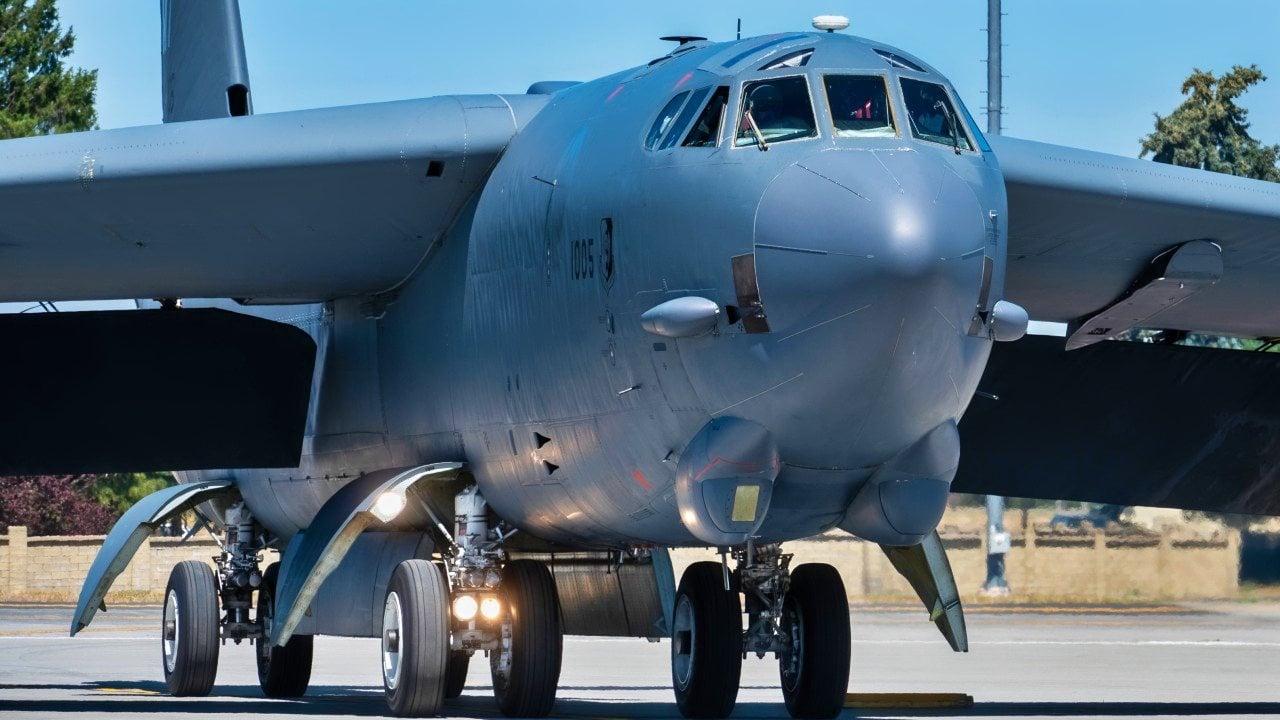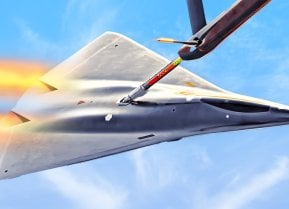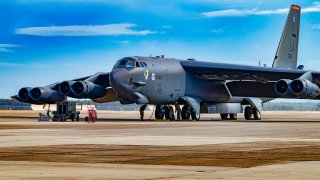The 'New' B-52J Bomber Won't Be Ready for Almost 10 Years
A recent report indicates the B-52J won't be ready until 2033 due to unforeseen airframe updates, potentially leaving gaps in U.S. strategic capabilities during the delay.
Summary and What You Need to Know: The U.S. Air Force is modernizing its B-52 Stratofortress with the B-52J variant, extending the bomber's service life into the 2060s.
-Upgrades include Rolls-Royce F130 engines for better fuel efficiency and reduced maintenance, advanced AN/APG-79 radar for enhanced targeting, and improved avionics and navigational systems. These enhancements aim to counter China's anti-access/area-denial (A2/AD) systems, enabling the B-52J to operate outside enemy range.
-However, a recent report indicates the B-52J won't be ready until 2033 due to unforeseen airframe updates, potentially leaving gaps in U.S. strategic capabilities during the delay.
The B-52J is Awesome. It’s Just Too Bad It Won’t Be Ready Until 2033
The U.S. Air Force is modernizing its B-52 Stratofortress with the B-52J variant, extending the bomber's service life into the 2060s.
Upgrades include Rolls-Royce F130 engines for better fuel efficiency and reduced maintenance, advanced AN/APG-79 radar for enhanced targeting, and improved avionics and navigational systems. These enhancements aim to counter China's anti-access/area-denial (A2/AD) systems, enabling the B-52J to operate outside enemy range.
However, a recent report indicates the B-52J won't be ready until 2033 due to unforeseen airframe updates, potentially leaving gaps in U.S. strategic capabilities during the delay.
The U.S. Air Force’s B-52 Stratofortress long-range bomber continues to impress, decades after its maiden flight. What the old bomber lacks in stealth, it more than makes up for in versatility, range, and endurance. Clearly, the Air Force believes this, because they have committed to building a newer variant of the Stratofortress, the B-52J.
The Air Force is updating the bird to make it stealthier. It is placing cyber defenses around the bombers as well, to ensure no hacker can interfere with the operations of these critical assets.
By making an entirely new, modernized variant, the Air Force believes it will extend the B-52’s service life until – get this – the 2060s.
The B-52J Upgrades
One of the most important upgrades, according to the engineers on the program, is to move away from the Pratt & Whitney TF33 engines in favor of the Rolls-Royce F130. The F130s were chosen for their reduced maintenance costs, better operational range, and increased fuel efficiency.
These engines are also widely available on the commercial market, which explains the significantly reduced maintenance costs. All this, at least on paper, works to make the B-52J a truly affordable and efficient combat platform.
Next up, B-52J engineers opted to integrate an upgraded version of Raytheon’s AN/APG-79 Active Electronically Scanned Array radar. This grants crews enhanced situational awareness as well as next-generation targeting capabilities. The radar provides greater resolution and operates at much longer ranges than other B-52 variants. It can track and engage multiple targets at once.
The B-52J will also enjoy newer avionics, along with next-generation cockpit displays and improved navigational systems, all of which help to reduce crew workloads during the course of a given mission. Newer weapons systems can be deployed seamlessly from these behemoths.
The Strategic Impact of the B-52J
By making these birds able to carry a variety of advanced weapons and by fitting out the bombers to fly farther, longer, and to operate over the horizon, the Air Force is responding to advances by rivals such as China that have shown themselves able to challenge conventional U.S. military power projection with their anti-access/area-denial (A2/AD) defensive systems.

These systems essentially form bubbles around territories that China seeks to defend and can complicate the ability of bombers or aircraft carriers to get within range of those regions. But the B-52J can operate outside the reach of those systems, and it will be armed with weapons that can do the same. The Pentagon is working feverishly to overcome China’s A2/AD advantage.
The Bad News
Now for the bad news. A recent government watchdog report concluded that the B-52Js will not be ready for action until at least 2033. Apparently, the upgraded engines required a bunch of originally unplanned updates to the B-52J airframe.
Waiting until 2033 for the newest variant of the B-52 to arrive is going to leave critical gaps in America’s strategic strike capabilities.
It remains to be seen whether the Air Force will be able to expedite the rollout of the B-52J, and how the delay impacts American national security against rising threats. Still, the B-52J variant is a necessary step in the right direction.
Author Experience and Expertise: Brandon J. Weichert
Brandon J. Weichert, a National Interest national security analyst, is a former Congressional staffer and geopolitical analyst who is a contributor at The Washington Times, the Asia Times, and The-Pipeline. He is the author of Winning Space: How America Remains a Superpower, Biohacked: China’s Race to Control Life, and The Shadow War: Iran’s Quest for Supremacy. His next book, A Disaster of Our Own Making: How the West Lost Ukraine, is due October 22 from Encounter Books. Weichert can be followed via Twitter @WeTheBrandon.
All images are Creative Commons or Shutterstock.
From the Vault
Russia Freaked Out: Why the U.S. Navy 'Unretired' the Iowa-Class Battleships
Battleship vs. Battlecruiser: Iowa-Class vs. Russia's Kirov-Class (Who Wins?)


